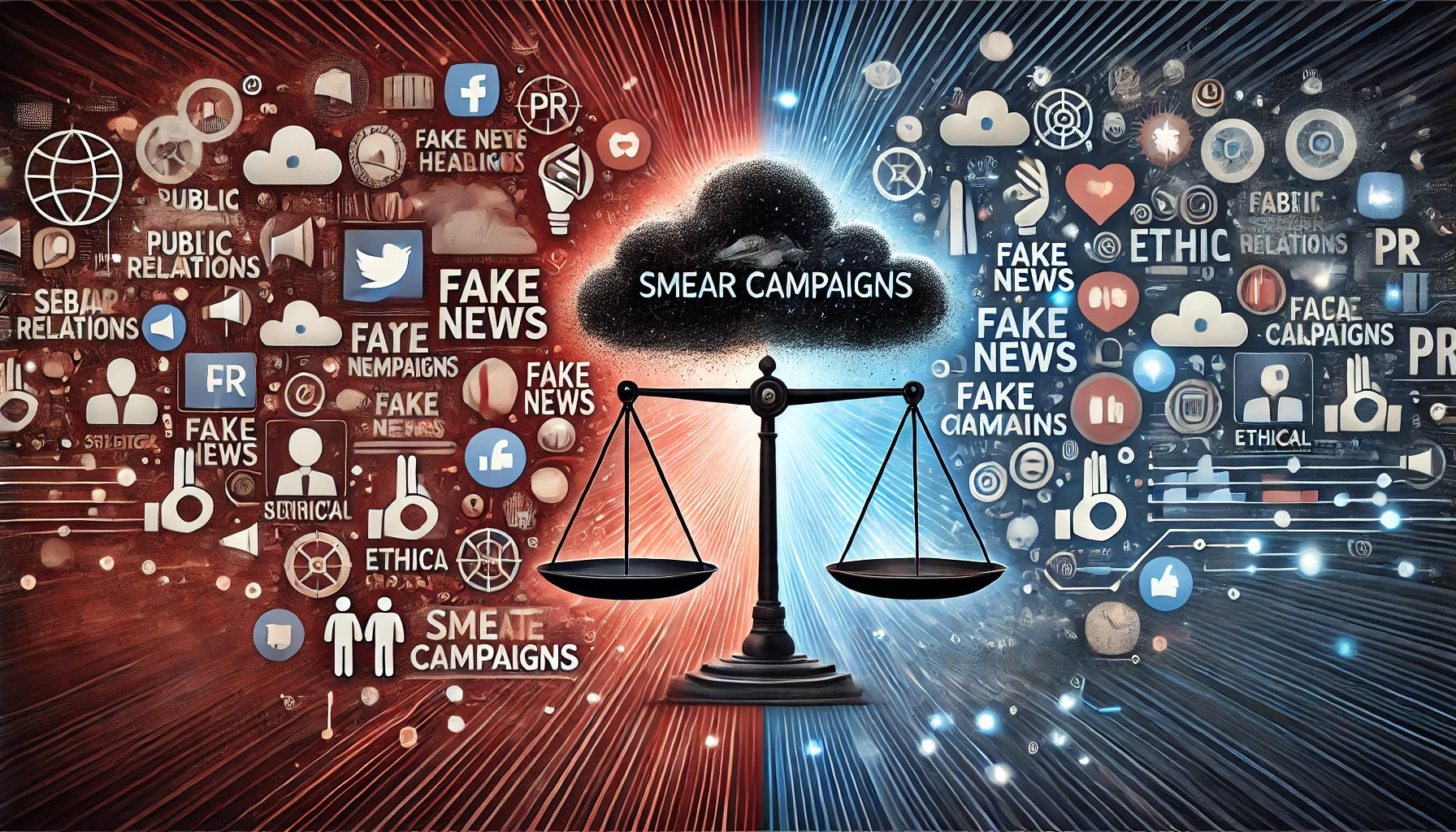Public Relations is often described as the art of shaping perception and building relationships. At its best, it elevates brands, amplifies voices, and fosters authentic connections between people and ideas. But like any powerful tool, PR can be wielded for darker purposes. Recently, smear campaigns—deliberate efforts to harm reputations—have proliferated across industries, from entertainment to politics and beyond, casting a shadow over the profession.
As the founder of Lightfinder PR, I’ve built my career on the belief that PR is a force for good—a way to inspire, inform, and connect. However, I have seen firsthand the fallout from unethical PR practices, especially when misinformation or divisive narratives take center stage. While I have not directly dealt with a smear campaign, I have extensive experience in crisis communications, helping clients navigate turbulent waters with integrity and clarity.
A smear campaign involves strategically spreading misleading, exaggerated, or outright false information to damage an individual’s or organization’s reputation. While such tactics aren’t new, their prevalence has exploded in the age of social media and 24/7 news cycles, where misinformation spreads like wildfire and outrage dominates attention.
These campaigns often blend calculated PR tactics—leaks to journalists, inflammatory press releases, or manipulative social media strategies—with darker elements like cyberbullying, fake accounts, and planted rumors. The goal is to undermine credibility, sow doubt, and create a narrative that’s hard to reverse, even when the truth emerges.
The entertainment industry is no stranger to reputational attacks, and the stakes are incredibly high. Celebrities and creators face relentless scrutiny, with public opinion often shifting overnight. Even rumors or accusations, no matter how unfounded, can cause long-term damage.
As someone who works with artists and creatives, I’ve witnessed how quickly an issue can escalate and threaten careers. In such moments, a clear, strategic response is often required—one that emphasizes truth, transparency, and resilience.
Politics, too, has long been a battlefield for reputation warfare. Modern PR strategies have taken smear tactics to new levels of sophistication, where false narratives are seeded through coordinated press efforts and social media algorithms amplify divisive content. In some cases, these efforts are designed not just to win elections but to destroy lives.
In my work with high-profile figures, including former President Jimmy Carter, Actor Jim Carrey, and Anita DeFrantz, the Vice President of the International Olympic Committee, I’ve seen how easily misinformation can spiral out of control and how crucial it is to remain calm and factual under pressure.
Smear campaigns damage more than individual reputations; they erode trust in institutions, the media, and democracy. When people are exposed to a constant barrage of misinformation, it becomes harder to discern fact from fiction, creating a cynical public less likely to trust legitimate news sources or engage in meaningful dialogue. For the PR industry, this is a double-edged sword. While some practitioners profit from the chaos, the broader industry suffers, as PR professionals are increasingly viewed as “spin doctors” or manipulators rather than ethical communicators.
At Lightfinder PR, I am committed to ethical storytelling and conscious communications. My approach to crisis communications emphasizes truth, transparency, and long-term trust. When clients face challenges—misinformation, public backlash, or internal missteps—we develop strategies to address the issue without using underhanded tactics. For example, I’ve successfully helped clients clarify misunderstandings, rebuild trust, and navigate public scrutiny while staying true to their values.
One of the key tools I share with clients is a document titled “PR Is Not Sales,” which outlines how public relations aligns with business goals through authentic communication rather than manipulation. This resource highlights the metrics of effective PR, including brand visibility, reputation management, and media placement impact, demonstrating that ethical PR is not just the right thing to do—it’s effective in the long run.
PR practitioners have a profound responsibility to uphold the integrity of our field. This means resisting the temptation to use underhanded tactics, even when pressured by clients or employers. It also means educating others about the true purpose of PR and calling out unethical practices when we see them.
The power of PR lies in its ability to shape narratives, build trust, and connect people. It is a tool that should be used to create opportunities and inspire positive change, not to destroy. Upholding ethical PR is not just a responsibility, it’s a privilege that allows us to make a meaningful impact.
Despite the challenges posed by unethical practices, I remain hopeful. Every time I help a client navigate a crisis with dignity, rebuild their reputation, or reclaim their narrative, I am reminded of the transformative potential of ethical PR. While smear campaigns may dominate headlines, they are not the final word.
With conscious effort and unwavering commitment to truth, we can restore faith in PR as a force for good. This transformative potential of ethical PR is not just a possibility, it’s a reality that we can all contribute to. At Lightfinder PR, that’s the path we’ll continue to walk—one authentic story at a time.
Let us use PR to build, not break. Together, we can rise above the noise and create narratives that inspire trust, connection, and hope. This is not just a call to action, it’s a rallying cry for all PR professionals to join hands and make a positive change. Our collective efforts can steer the narrative towards ethical PR and inspire trust in our profession.

